
Water is one of the most important resources on earth. Found everywhere on our planet, it is crucial for sustaining life. Water is also one of the most powerful substances on our planet, capable of carving through solid rock, crushing objects with its great pressure, and blocking the light of the sun.
In this series, we’ll dive into the world of hydropower. We’ll look at how civilizations learned to use the power of water, and the special structures and equipment used today. We’ll learn just how simple, and not so simple, tapping into the power of water can be; and look at ways hydro-electric power can help shape our future.
Since ancient times, humans have understood the importance of water. Early engineers developed ways to collect and control water to provide life for their communities, beginning with the development of irrigation canals in ancient Mesopotamia. But there is more to water than its life-giving power.
Water stores a ton of energy because of its density. This energy can be seen in a raging river or during a flood, where the force of flowing water can carry trees, homes, even sides of mountains away with it.
Humans recognized this power and found ways to use the force of water to help them do work. The invention of the water wheel, as shown in Figure 1, is credited to the Greeks as far back as 4000 BCE. These water wheels were primarily used to collect water (driven by a human or animal). Early engineers realized this process could be reversed and water could be used to drive machines, and an industrial boom followed.
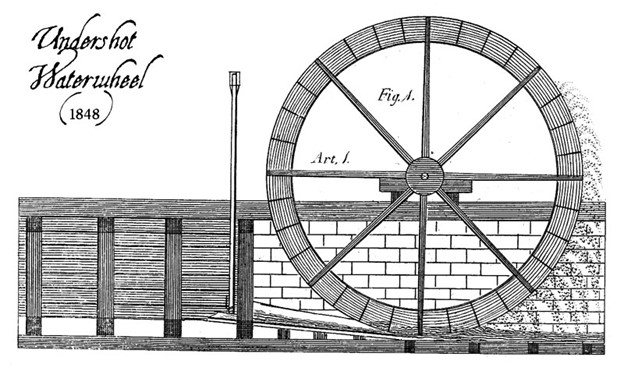
Figure 1 – An Undershot Waterwheel circa 1848 (image from Penn State University)
For the next few thousand years, engineers would develop the water wheel as a tool for driving grain mills, lumber yards, mining equipment, etc. Water would fuel growth through the Industrial Revolution. During this time engineers figured out new ways of using the energy of water from capturing natural flow energy with the undershot water wheel (Figure 2) and converting energy from the height or head with the overshot water wheel (Figure 3).
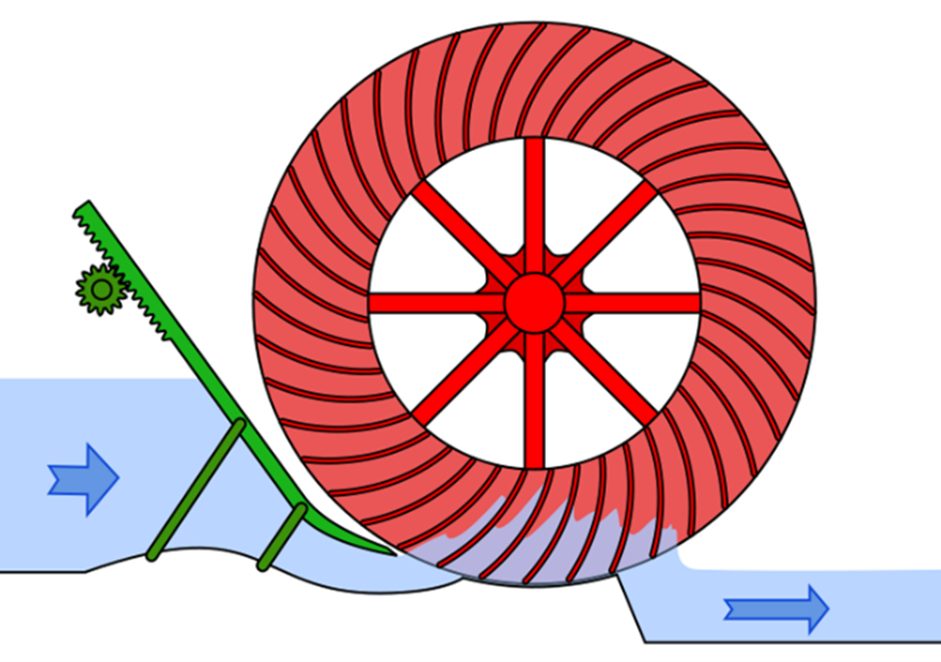
Figure 2 – Undershot Waterwheel
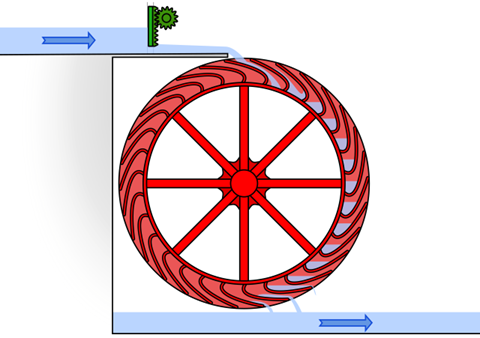
Figure 3 – Overshot Waterwheel
In the 1880s, electricity became the newest industrial and civil advancement tool. The waterwheel began powering generators, or dynamos. Soon after, the hydro-electric turbine would transform hydropower into a utility-scale electric giant that would fuel expansion in the United States well into the 1950s.
Engineering marvels like the Hoover Dam (Figure 4) provide thousands of megawatts of power and create huge manmade lakes. Lake Mead is 247 square miles with a depth of up to 590 ft. The advancement of large hydro power plants would dramatically alter the landscape of the United States and countries worldwide. These reservoirs regulate the flow of water to nearby communities, providing consistent water supply throughout the seasons, avoiding the drought/flood cycle common in these areas. They also create huge natural recreation areas.
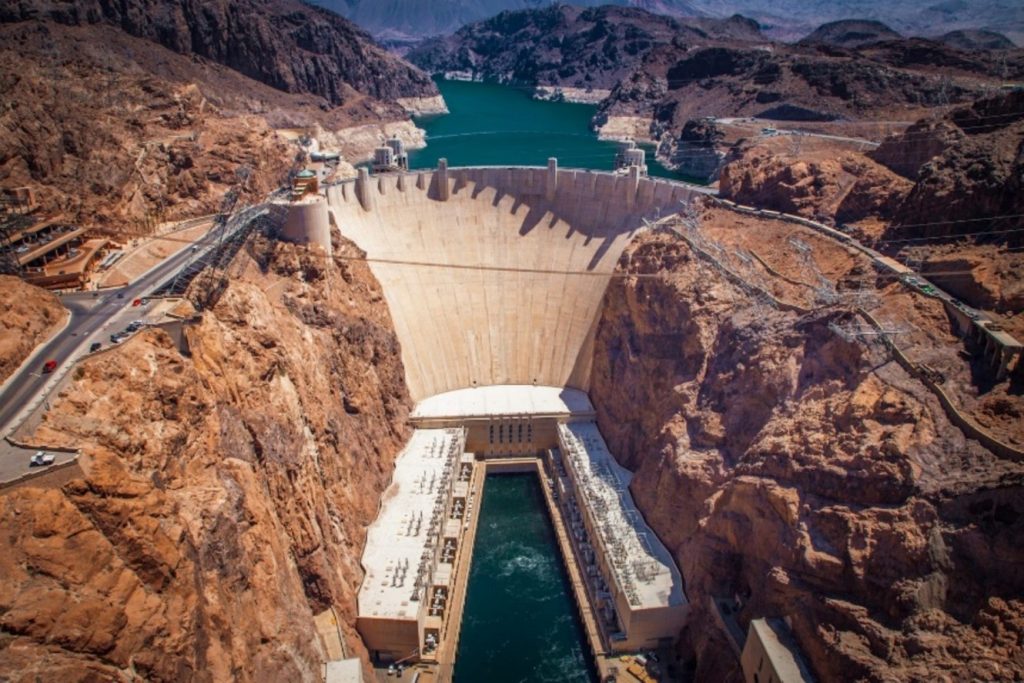
Figure 4 – The Hoover Dam, built in the 1930s, has an installed capacity of 2,079 MW)
Capturing the energy in water is more than just letting a river run over a wheel and turning a generator. The theory is really simple, but the application is much more complex.
One must consider three types of energy when developing a hydropower project:
These energies are all related to fluid dynamics by Bernoulli’s Equation.
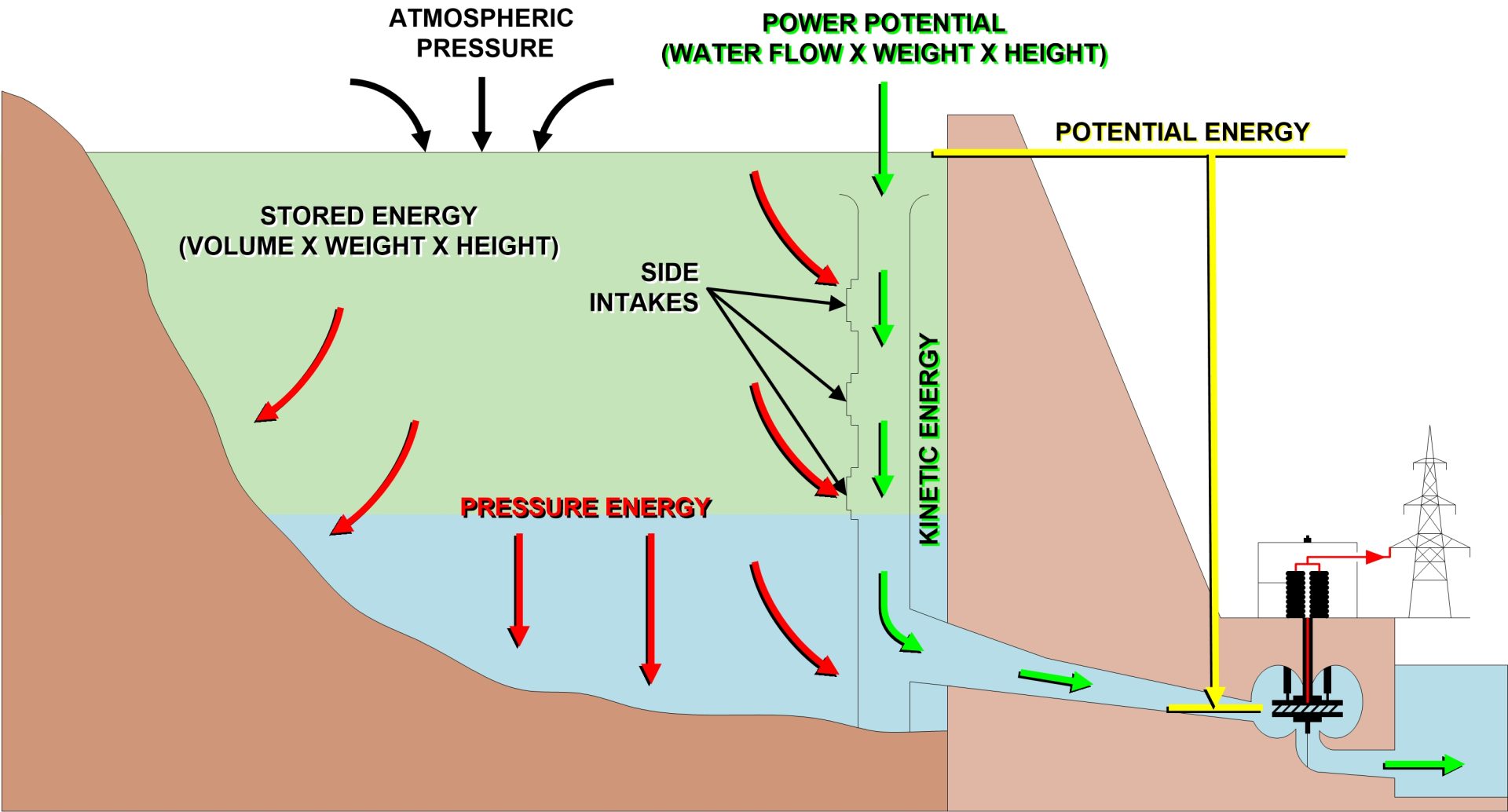
Figure 5 – Sources of Energy in a Dam
Without going into the math, it’s important to understand that different turbine designs work better for different types of energy. Often, these are simplified to low head and high head applications. In other words, some turbines are designed to operate with a high inlet pressure and some with a low inlet pressure.
Some turbines are especially suited to operate with large flow rates, which is a result of the difference in height (head) between the headwater and tailwater or the inlet and outlet points of the water source. A large elevation change will cause water to move at a higher velocity.
A third consideration is how long the water source can operate the turbine. When the source is the natural flow of a river, that is not really an issue, but if the source is a dam, that could be a limiting factor. The Hoover Dam famously represents this challenge, in 2022, the facilities output was down nearly 50% due to water levels in Lake Mead.
The volume of water available to power the turbines at the required head is like a battery and is referred to as stored capacity or live storage. See Figure 6. As the water level drops in a reservoir, the rated output of the turbine decreases, since there is not enough available energy to operate it at full power.
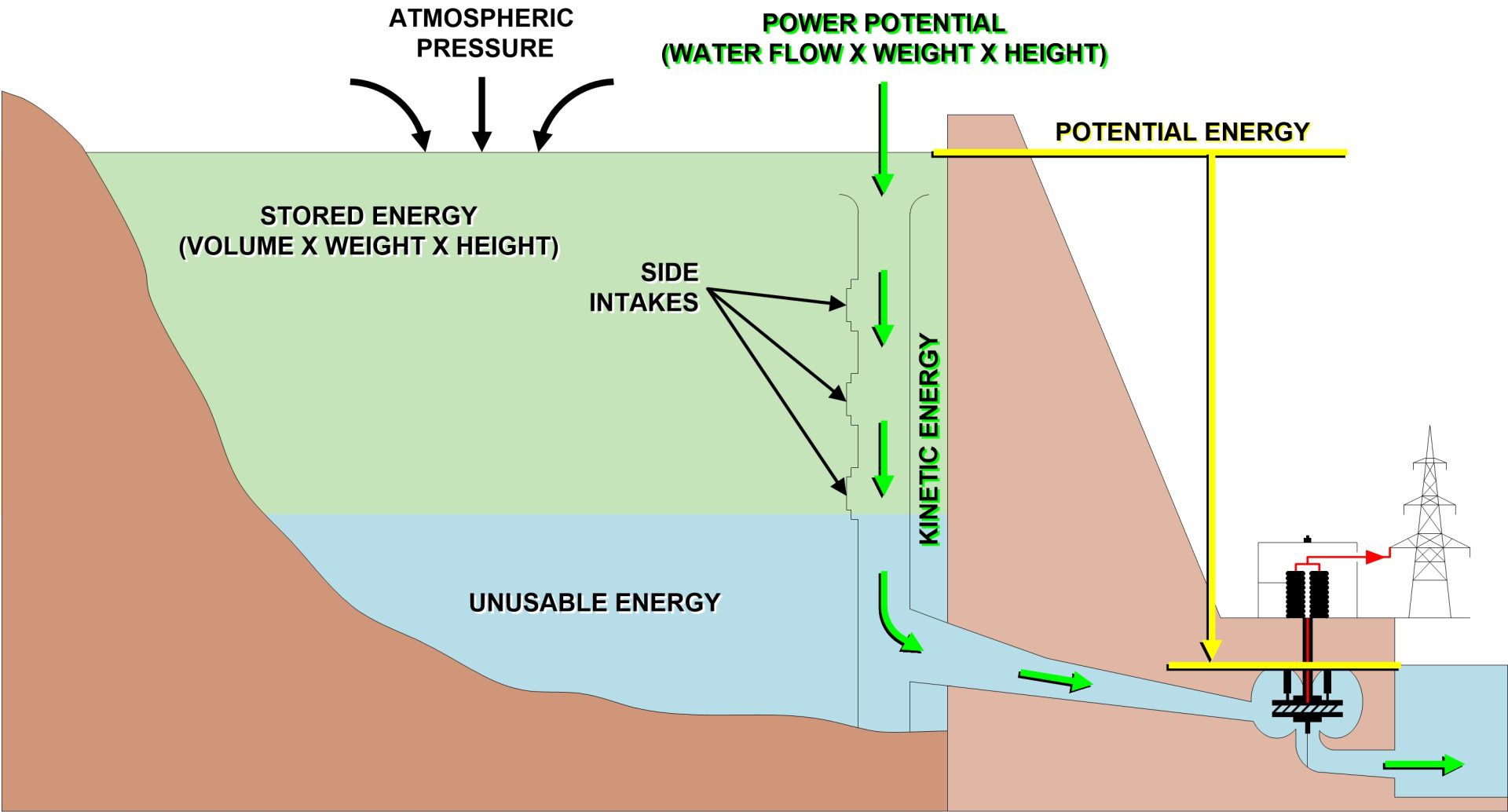
Figure 6 – Energy Available in a Dam
In order to create a hydropower plant, engineers have to determine how much energy is available, and how to capture it, while managing costs and environmental impacts. It is not as simple as just building a lake and throwing some turbines in. (Even though Pumped Storage Hydropower[SH3] is close).
Site selection is a big part of this equation. Is there enough energy in the river to power a plant? Is there a sufficient height difference from the source to where the plant will be located to create enough head? Rivers that begin at some elevation and drain water from a mountain lake to the ocean may have enough natural energy that the designer can install a facility at a suitable site downstream and pass the flow of the river through the plant, with little modification. These are commonly referred to as run-of-river facilities. Water is either diverted from the stream at a higher elevation and piped to the powerhouse (Figure 7), or a smaller diversion is installed adjacent to the powerhouse to force some of the natural flow to the inlet of the turbines (Figure 8).
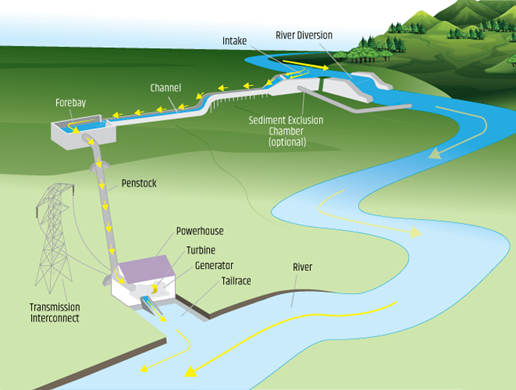
Figure 7 – Run of the River design that draws water from upstream and sends it to the powerhouse via a canal and long penstock.
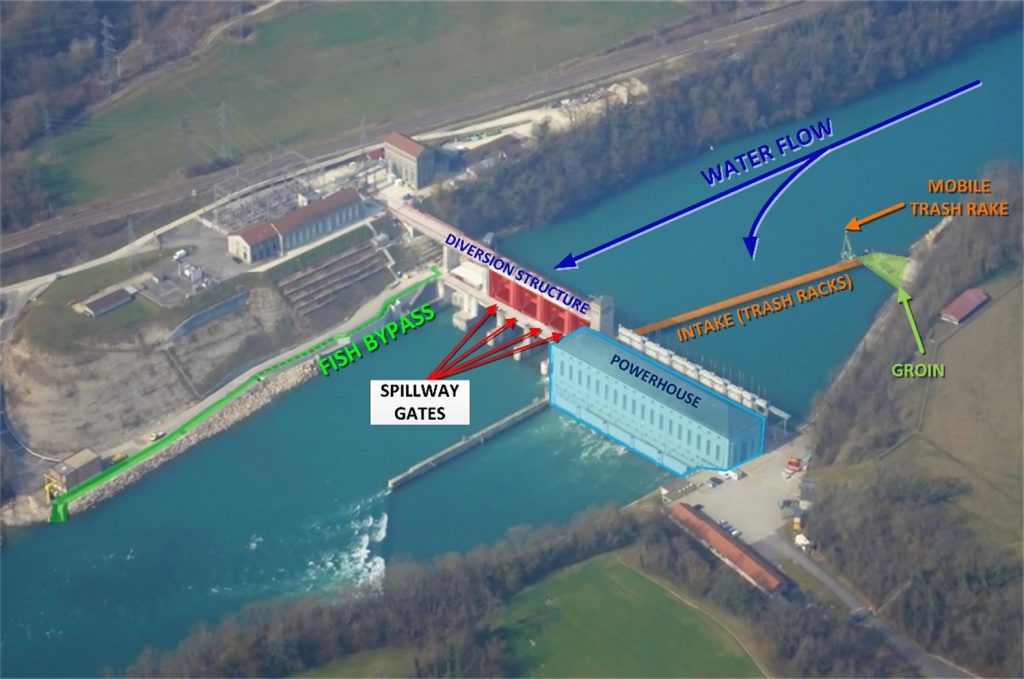
Figure 8 – A Run-of-River plant that uses the kinetic energy of the river without the need to convey water through canals.
Sometimes, there is not enough elevation at the selected site, or perhaps there is not enough water volume to sustain operation. In some regions, the flow of water in a river varies drastically during the seasons, which would not be suitable for a power plant, and can pose risk to the communities that rely on that water source. In these instances, an impoundment or dam is built to create a reservoir, this is called an impoundment, or storage facility.
Impoundment facilities are what most people think of when they think of hydropower. They can be used to generate immense amounts of electricity but have a significant impact on the environment, and require significant engineering and civil works. In reality, many hydroelectric facilities are a combination of designs and technologies, custom engineered to maximize the potential of the site.
Traditionally, the creation of impoundment facilities and the reservoirs they fill have displaced hundreds to thousands of acres of habitat for both humans and wildlife. The Three Gorges Dam in China (Figure 9) displaced 1.3 million people by flooding 17 cities and 109 towns. It is said that the shift in water weight is so much that it changed the rotation of the Earth, making a day 0.06 microseconds longer.

Figure 9 – Three Gorges Dam in China created a reservoir that covers 419 square miles. It has an installed capacity of 22,500 MW
Aside from generating electricity, large reservoirs can be important for year-round storage of water for municipal and agricultural use, providing enough storage to carry towns through the “dry season,” and can also regulate runoff from heavy rains and snow-melt, that historically would have resulted in the periodic flooding of the plains downstream.
Significant storage capacity can help utility companies by providing a large energy source that can be brought on-line relatively quickly to provide power during high demand. This can be especially useful as we incorporate more renewable energy sources, such as solar and wind, into the grid.
In my next blog, we’ll dive into the equipment used in hydropower plants, and all the potential uses (and challenges) for hydropower plants.